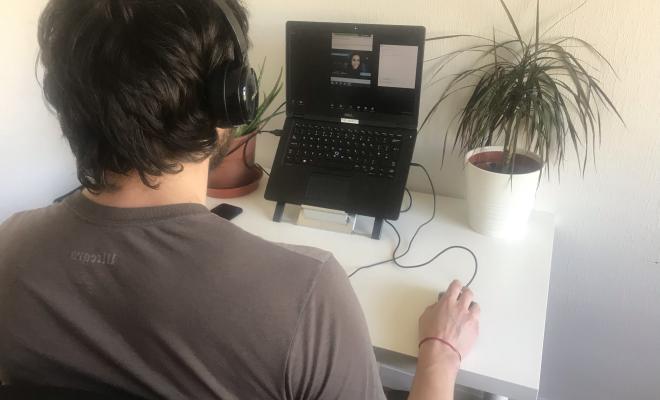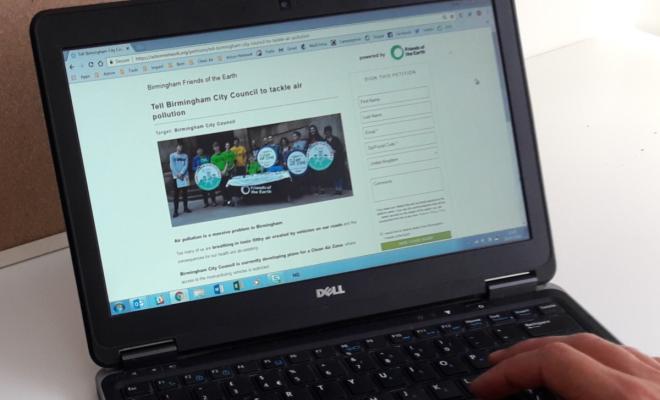21 Feb 2023
A lot of the etiquette in an online meeting is similar to an offline meeting - don't talk over each other, wait your turn to speak, remain focused in the meeting, and allow everyone the space and time to contribute.
But in an online meeting it’s harder to pick up on social cues and read people’s body language. So, we need to take extra steps to make sure that everyone feels able to participate.
Preparation
Make sure you give people the information they need to participate ahead of the meeting.
-
Make sure everyone has the login details and codes they need to join the meeting well in advance. Include a phone number they can call if they're having difficulties joining online.
-
Send an agenda and any other documents before the meeting so people can have them open on their computers.
-
Invite people to test their microphones, speakers and webcam before the meeting, to avoid this taking up time during the meeting itself.
-
Check your tech. If you're facilitating the meeting, log in earlier in the day to check everything's working as it should.
-
Resend the joining instructions to everyone a couple of hours before the meeting so the instructions will be at the top of everyone’s inbox.
Starting the meeting
To get your meeting off to a good start:
-
Join 10 minutes early to double check everything works and to ensure you're online when the first people arrive.
-
Welcome people as they arrive, either in the chat box or using audio. This reassures people that they are in the right place.
-
Allow time in your agenda for a bit of faff (within reason). It’s inevitable that people will join late or have difficulties.
-
Keep people updated if you're holding off on starting to allow more people to arrive.
First agenda items
1. Take time for introductions
Ask people to introduce themselves one by one. This helps people hear who else is on the call and gives people a chance to speak and get used to their microphones.
2. Set ground rules
It’s useful to have ground rules at all meetings, but even more so when meeting online, as we can’t rely on social cues to help people understand how they should participate.
Ask your group to come up with these ground rules together during your first online meeting. Remind people of these rules at the start of each subsequent meeting, especially if there are new people on the call.
Here are some example ground rules:
-
If you want to speak, please indicate in the chat box and the facilitator will then invite you to talk.
-
Give the meeting your full attention and avoid distractions (live TV in the background).
-
If you agree with someone, say so in the chat box rather than speaking.
-
Don’t have separate conversations in the chat box, this can be distracting.
-
Be mindful of how much you are speaking and allow others the space to contribute.
-
Keep your webcam on if possible.
-
Go on mute when you're not speaking.
3. Get some help
Ask others in the meeting for help. It's hard to facilitate the meeting, take notes and keep an eye on the chat box, so ask for volunteers to help with these things.
Getting down to business
Once you've finished with "housekeeping", you can get down to business.
-
As much as possible, stick to your agenda and times. It’s hard to stay focused on a computer for a long time, so try not to go over your agreed time.
-
If people are struggling with their internet connection, try turning webcams off.
-
Remind people of your ground rules as you go.
-
Embrace silence as agreement! Don’t be scared of a few moments of quiet. Ask people if they're happy to move on and if nobody objects for a few seconds, assume everyone is happy.
Ending the meeting
-
Thank people for coming and let them know they can leave the call.
-
Make sure you record anything in the chat box you want to keep. For example, cut and paste conversation or links shared in the chat box in a Word doc.
-
Do your usual follow up – sending meeting notes and details of your next online meeting.
Socialising
Most people enjoy being part of a group because of the social connections, as well as for the more serious work of campaigning. In the current situation, it’s even more important that we stay connected and foster friendships in our groups. Whilst online meetings won’t be an exact replica of a chat over a cup of coffee or a beer, here are some tips on how to keep the social aspect of your group going:
-
Keep the meeting open for an optional 30-minute social time afterwards. Step away from facilitating and let people catch up and chat more naturally.
-
Start a WhatsApp group to talk more informally between meetings. Send photos, share interesting articles, and send tips on how you’re staying happy and healthy.
-
Set up "online coffee mornings" where members can drop in for 10 minutes or so during a set hour to have a quick chat and connect with each other.
-
Consider setting up an online book club or join film screening session. Whilst campaigning work may have slowed down, use the time to learn and connect with one another.
Privacy and security
Here are a few ways to reduce the risk of your meeting being disrupted.
- Don't publicly share your meeting link. Avoid sharing the link on social media or public platforms.
- Check your meeting settings. Make sure you know how to remove disruptive participants and control screen/file sharing.



